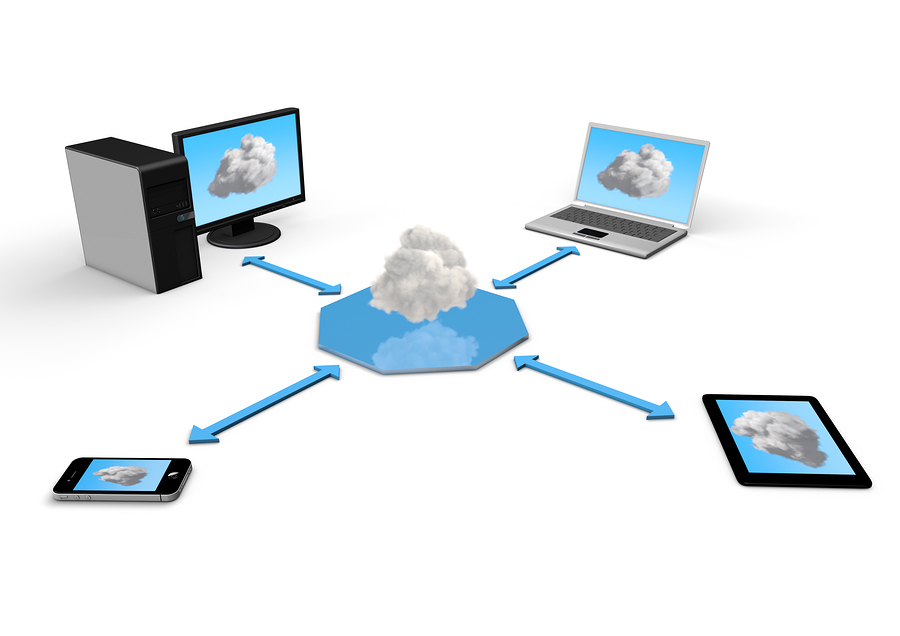You’ve got one, right? OK, all done here. See you next month. Wait — you don’t have one? Alright, we need to talk.
If the latest hurricane, superstorm or natural disaster passed you by, be thankful. But unless you operate your business out of a bunker carved into the side of a mountain, you need to have a plan for when the next fire or flood burns down or washes away your offices and everything in them.
 It’s dark stuff, I know. And you have insurance for all that, of course, so you can get back on your feet sooner or later. But the continuity of your business is important, as is the preservation of important business data. Your customers will be patient with you while you rebuild, but they may not be as forgiving when they find out you lost all their files and information and you need to start from scratch. It’s best to be prepared for the worst.
It’s dark stuff, I know. And you have insurance for all that, of course, so you can get back on your feet sooner or later. But the continuity of your business is important, as is the preservation of important business data. Your customers will be patient with you while you rebuild, but they may not be as forgiving when they find out you lost all their files and information and you need to start from scratch. It’s best to be prepared for the worst.
The Basics
I can’t speak to the operational aspects of disaster recovery; that’s something that will be different for every business. But the technology side of disaster recovery and business continuity is pretty straightforward, and can be summed up in a single word: redundancy.
Redundancy actually makes the technology part of disaster recovery pretty easy, because these days it’s cheap. Years ago, it was expensive to maintain redundant versions of all your technology “stuff”; you could have another version of your accounting software server off-site just in case, but it was a considerable expense, especially for a small business.
Today, with the combination of cloud services and the ease of converting documents to electronic files, having redundant versions of your important business documents and services elsewhere is an inexpensive proposition. Furthermore, the technology services that you use to operate your business – accounting, order processing, even telephony – can often be hosted or provided completely outside of your physical office. That means that when disaster strikes, you can restart many important operations as soon as you are ready to do so.
Building a Plan
At its most basic level, redundancy simply means having copies of things. You probably (hopefully!) have a backup drive or server somewhere in your office where you backup all your important data. The data on this drive or server is redundant; it’s a copy of the original. Many computers – especially the web servers that run the internet – have redundancy built in; redundant hard disks in case one fails, redundant power supplies, and so on. Most internet hosting companies even have multiple redundant connections to the internet in case one goes down, and redundant power in the form of generators. This is why it’s generally a pretty big deal when an internet provider goes dark – that means something really big failed that even the redundancy couldn’t handle.
 For your business, you want a basic level of redundancy that will allow you to deal with typical disasters (fire, flood, etc); you’re not preparing for a nuclear apocalypse. In order to do so, you need to think about what’s important to you and how you operate. What can you live without for a while? What will break your back if it’s not working? You probably have a short list in your head; it’s time to get that down on paper.
For your business, you want a basic level of redundancy that will allow you to deal with typical disasters (fire, flood, etc); you’re not preparing for a nuclear apocalypse. In order to do so, you need to think about what’s important to you and how you operate. What can you live without for a while? What will break your back if it’s not working? You probably have a short list in your head; it’s time to get that down on paper.
Disaster recovery (from a technology perspective) can be broken down into two broad categories: Services and Documents. Services include things like accounting software, order management tools, your website, your telephones, and so on. Documents are most everything else: Customer records, accounting documents, employment records, payroll and tax documents, etc.
Your goal with any disaster recovery plan is to identify which of the above requires redundancy. To be even more specific, what you’re really looking for is what requires off-site redundancy. When your accounts receivable computer melts in a fire, the backup drive in the closet is probably going to melt along with it. Backing up within your office is still a great (and necessary) fallback when a hard drive or computer dies, but it does you no good when a real disaster strikes.
Redundant Services
On the services side, what do you need to get back up and running as quickly as possible? Are these things you can move outside of your physical facility entirely? For example, does your accounting software offer a hosted version?
 I know many business owners are hesitant to put their accounting info in “the cloud” or in any third-party hosting environment; they want to control that computer, to see it when they walk in the door in the morning. They’ve heard horror stories of data loss or hosting companies shutting down. I get it; this is important data, and it feels better to keep it close.
I know many business owners are hesitant to put their accounting info in “the cloud” or in any third-party hosting environment; they want to control that computer, to see it when they walk in the door in the morning. They’ve heard horror stories of data loss or hosting companies shutting down. I get it; this is important data, and it feels better to keep it close.
In reality, this is like keeping your savings bonds in a nightstand drawer when the bank offers a safe deposit box for a few bucks a month. Assuming you’re not that person in the bunker carved into the side of a mountain (and if so, do your customers ever come to see you?), the bank is better equipped to keep your stuff safe than you are.
Many if not all business technology services can be provided outside your physical facility, and most of them have their own redundancy; in other words, when you subscribe to an online accounting package, the company that provides it will keep redundant copies of your data in multiple locations, and will have redundant servers to deal with any hardware failure. In fact, the underlying infrastructure of most cloud services assumes frequent failure. The giant server farms (like Amazon Web Services) that run cloud services have hardware failing all day long; there is just so much redundancy that you never see any interruption at all.
Obviously, I can’t tell you what to choose, but I’ll give you an example: Our company runs almost nothing “in-house”. Accounting, telephony (automated attendant, call routing, etc,), web hosting, documentation storage, you name it; pretty much everything is handled by third parties outside our “physical” realm. I can count on one hand the number of times any of these services has been unavailable for more than a few minutes. If and when disaster strikes, we have very little operational technology that would be affected at all.
Redundant Documents
Off-site document storage has been a big business for many years, and not just for redundancy purposes; some businesses just don’t have enough room for all the paper they generate. We’ve all seen those Iron Mountain trucks rolling around picking up boxes of receipts and sales orders and moving them to big warehouses. It’s not a cheap service, but since these companies specialize in keeping your documents safe and sound, they’re often a sound choice.
I’m going to make a radical suggestion that I’ve discussed in a previous column: Get rid of all that paper. Paper business documents are a terrible liability. They have social security numbers and credit card numbers on them; they catch fire easily; they can be spirited away by employees or just plain lost.
It’s time to scan all that stuff. You want to keep a paper copy in the closet; fine. But scan it all and keep digital copies offsite. The document management companies can take care of all that for you for a fee, and they’re not a bad choice if you’ve got years and years of documents to digitize.
However, document scanning is a cheap and incredibly accurate technology now. A desktop document scanner combined with a web service like Evernote can quickly convert you to (mostly) paperless, and you’ll have a redundant copy of all your documents that you can access from anywhere when disaster strikes. The cost is negligible, but the feeling of security is priceless.
Brent Buford is a co-founder of eBlox, a Tucson, AZ and Austin, TX-based web development firm. He can be reached at brent@eblox.com.